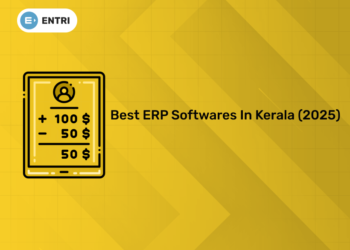Table of Contents
Raja Ramanna was an Indian Physicist who is best known for his work in India’s Nuclear Program and later became the director of this Program in 1967. He also supervised scientific research on nuclear weapons.
Raja Ramanna operated India’s nuclear program for nearly four decades, due to which he is considered as the ‘father of India’s nuclear program’. The Government of India honored him with high civilian honors such as Padma Shri (1968), Padma Bhushan (1973) and Padma Vibhushan (1975) for his work for the nation.
This article gives you a glimpse of Inventions, contributions, awards received, famous quotes and other important facts of the well known Indian physicist Raja Ramanna who paid contribution for nuclear power program in India. Going through this article will be very useful in GK parts for the candidates who are preparing for various competitive exams.
Attempt Free GK Mock Test! Download Entri App!
| Raja Ramanna | |
| Born | 28 January 1925 |
| Died | 24 September 2004
Mumbai, Maharashtra, India |
| Birth Place | Tiptur, Princely State of Mysore, British India |
| Father | B. Ramanna |
| Mother | Rukminiamma |
| Nationality | Indian |
| Education | Bishop Cotton Boys’ School Bengaluru
St. Joseph’s College Madras Christian College University of Mumbai King’s College London, United Kingdom |
| Known for | India’s nuclear program
Operation Smiling Buddha Operation Shakti |
| Awards | Padma Shri (1968)
Padma Bhushan (1973) Padma Vibhushan (1975) |
| Fields | Physics |
| Institutions | Bhabha Atomic Research Centre
Defence Research and Development Organisation International Atomic Energy Agency Ministry of Defence National Institute of Advanced Studies |
Raja Ramanna was an Indian nuclear scientist who played an important role in the development of India’s nuclear program. He was involved in India’s nuclear program in 1964 and initially worked under the supervision of renowned nuclear scientist Dr. Homi Jahangir Bhabha and became the director of this program in 1967 after his death. He observed and promoted scientific research related to the development of nuclear weapons. He was also the head of the scientific team that carried out India’s first nuclear test in 1974.
Biography of Raja Ramanna
Raja Ramanna was born on 28 January 1925 in Tumkur, Mysore state, at a place called Tiptur. His father’s name was Ramanna and mother’s name was Rukmini. Child Ramanna showed a keen interest in music in childhood, after which his parents introduced him to traditional Western music. His early education began at the Bishop Cotton Boys School in Bangalore where he was primarily educated in literature and traditional music. He did his B.Sc in Physics from Madras Christian College. And a BA in ‘Traditional Music’ in 1947. Degree also. After this he enrolled in Bombay University, from where he got M.Sc in Physics. And then in the subject of ‘music’, M. Mus. did.
Subsequently, in 1952 Ramanna received a Commonwealth Scholarship after which he went to England to do his doctorate. He enrolled for a doctorate at King’s College, University of London and completed his doctorate in ‘Atomic Physics’ in 1954. In the United Kingdom, he did his research at Atomic Energy Research Establishment (AERE) where he excelled in ‘Nuclear Fuel Cycle’ and Nuclear Reactor Designing. He had a serious interest in music and during his stay in England he enjoyed European music and read and learned about Western philosophy.
Raja Ramanna’s interest and enthusiasm in western music and civilization continued throughout his life and after returning to India he established himself as a talented piano player. He performed traditional European music at several concerts in India and abroad. In 1956, at the invitation of ‘National College of Arts’ and ‘National Academy of Performing Arts’ of Pakistan, he gave a speech on classical piano and also performed his art.
On 24 September 2004, Dr. Raja Ramanna went to the other world. He was 79 years old at the time of his death.
Raja Ramanna’s Scientific Achievements
1: Who was the first woman President of India?
Urged by Dr. Homi Bhabha, Raja Ramanna returned to India and joined the Tata Institute of Fundamental Research where he began his work on nuclear fission and scattering. He joined Bhabha Atomic Research Centre in 1954 and was soon heading the nuclear weapons research program. The attempt to develop an indigenous nuclear device began in 1967. In 1974, India conducted its first nuclear test at Pokhran and it was a major success.
Dr. Ramanna held several important positions in the course of his scientific career. These included the roles of Director in Bhabha Atomic Research Centre, Director-General in the Defense Research and Development Program, Chairman in the Atomic Energy Commission, Vice President in Indian National Science Academy, and Director in the National Institute of Advanced Studies.
He also played a major role in setting up the Centre for Advanced Technology at Indore and Variable Energy Cyclotron Centre at Kolkata.
Free UPSKILLING Courses!
Take your first step toward mastering in-demand skills, acing interviews, and securing top-tier jobs with Entri's free upskilling courses.
Start Learning!Inventions of Raja Ramanna
Ramanna served as director of BARC (1972–78 and 1981–83) and oversaw the country’s first nuclear weapons test (1974). He also headed India’s Atomic Energy Commission (1984–87) and served as the secretary for defense research (1978–81) and as the minister of state for defense (1990).
Known as the “Father of India’s Nuclear Program,” Dr. Raja Ramanna (1925-2004) was the protégé of two of India’s greatest Nuclear Scientists, Dr. Homi Bhabha and Dr. Vikram Sarabhai. When India tragically lost Dr. Bhabha in 1966 and Dr. Sarabhai in 1971, Dr. Raja Ramanna was left to ‘carry the torch’ and ensure that India’s first nuclear bomb test, known by its codename Smiling Buddha was successfully completed on May 18, 1974.
India’s nuclear program
Dr. Raja Ramanna was one of the most important persons associated with the ‘nuclear program’ of the country started by India’s first Prime Minister Jawaharlal Nehru. He returned to India after his doctorate from England in 1954 and was appointed to the senior technical team at the Bhabha Atomic Research Center under the leadership of Dr. Homi Jahangir Bhabha. In 1958, he was appointed the Chief Directing Officer of this program. After the tragic death of Dr. Homi Jahangir Bhabha, he was made the head of the program and under his leadership in 1974 India conducted the first nuclear test (Smiling Buddha) after which Raja Ramanna got international fame and Government of India gave him Padma Vibhushan Was honoured.
In 1978, the then President of Iraq, Saddam Hussein proposed to build a nuclear bomb for Iraq in front of King Ramanna, but he rejected the proposal and returned to India.
In the later days of his career, King Ramanna advocated strict policies to prevent nuclear proliferation. He also traveled to Pakistan to attend the ‘International Physics Conference’ and gave a speech on nuclear physics. He contributed significantly to efforts to establish peace between India and Pakistan and also played a leading role in preventing ‘nuclear confrontation’ in the region.
In 1984, he joined the International Atomic Energy Institute and was also the President of the 30th General Session of the IAEA.
Nuclear weapon, device designed to release energy in an explosive manner as a result of nuclear fission, nuclear fusion, or a combination of the two processes. Fission weapons are commonly referred to as atomic bombs. Fusion weapons are also referred to as thermonuclear bombs or, more commonly, hydrogen bombs; they are usually defined as nuclear weapons in which at least a portion of the energy is released by nuclear fusion.
Principles of atomic (fission) weapons
When bombarded by neutrons, certain isotopes of uranium and plutonium (and some other heavier elements) will split into atoms of lighter elements, a process known as nuclear fission. In addition to this formation of lighter atoms, on average between 2.5 and 3 free neutrons are emitted in the fission process, along with considerable energy. As a rule of thumb, the complete fission of 1 kg (2.2 pounds) of uranium or plutonium produces about 17.5 kilotons of TNT-equivalent explosive energy.
In an atomic bomb or nuclear reactor, first a small number of neutrons are given enough energy to collide with some fissionable nuclei, which in turn produce additional free neutrons. A portion of these neutrons are captured by nuclei that do not fission; others escape the material without being captured; and the remainder cause further fissions.
The continuing process whereby neutrons emitted by fissioning nuclei induce fissions in other fissile or fissionable nuclei is called a fission chain reaction.
Principles of thermonuclear (fusion) weapons
Nuclear fusion is the joining (or fusing) of the nuclei of two atoms to form a single heavier atom. At extremely high temperatures in the range of tens of millions of degrees the nuclei of isotopes of hydrogen (and some other light elements) can readily combine to form heavier elements and in the process release considerable energy hence the term hydrogen bomb. At these temperatures, the kinetic energy of the nuclei (the energy of their motion) is sufficient to overcome the long-range electrostatic repulsive force between them, such that the nuclei can get close enough together for the shorter-range strong force to attract and fuse the nuclei hence the term thermonuclear. In thermonuclear weapons, the required temperatures and density of the fusion materials are achieved with a fission explosion.
Pokhran nuclear tests: Two decades later
In the mid-1980s, Atomic Energy Commission Chairman Raja Ramanna and Army Chief Krishna swami Sundarji often discussed a future India with nuclear weapons. For General Sundarji, the idea of an Indian bomb that could neutralise conventional Chinese military superiority was attractive. Dr Ramanna saw the bomb more as an enabler and equaliser- a weapon not necessarily intended for use, but the threat of whose use could achieve political and military goals.
As India’s conventional military strength improved, the considerations that drove Gen Sunderji’s line of thinking became increasingly less compelling. By the second half of the 1990s, defence analyst K Subrahmanyam could present Ramanna’s ideas to A B Vajpayee, a longtime advocate of nuclear weapons to ensure a peaceful Indian subcontinent.
his anecdote from former National Security Adviser Shivshankar Menon’s 2016 book, Choices: Inside the Making of India’s Foreign Policy, offers a clear and apt understanding of why India needed to conduct five nuclear tests at Pokhran over two days, May 11 and May 13- 20 years ago. Over the last two decades, India has more or less achieved the strategic goals that the nuclear tests set their sights on.
Minister of State
In 1990, Ramanna was made Union minister of State for defence by V.P. Singh administration. He was a nominated member of the Rajya Sabha from 1997 to 2003. Dr. Ramanna was closely associated with the I.I.T. Bombay, having been chairman of the board of Governors for three consecutive terms from 1975 to 1984. In 2000, Ramanna was also the first director of National Institute of Advanced Studies, Bangalore.
Posts held
- Chairman, Governing Council, Indian Institute of Science, Bangalore
- Council of Management, Jawaharlal Nehru Centre for Advanced Scientific Research, Bangalore
- Chairman, Board of Governors, Indian Institute of Technology, Bombay
- President, Indian National Science Academy
- Vice-President, Indian Academy of Sciences
- Scientific Adviser to the Minister of Defence
- Director-general of Defence Research and Development Organisation (DRDO)
- Secretary for Defence Research, Government of India
- Chairman, Atomic Energy Commission
- Secretary, Department of Atomic Energy
- Director, Bhabha Atomic Research Centre
- Director, National Institute of Advanced Studies, IISc campus, Bangalore
Attempt Free GK Mock Test! Download Entri App!
Awards of Raja Ramanna
The Government of India honored Dr. Ramanna from time to time in view of his work done for the country.
- Meghnad Saha Medal of the Indian National Science Academy, 1984
- Om Prakash Bhasin Award, 1985
- R.D. Birla Memorial Award, 1986
- Ashutosh Mukherjee Gold Medal, 1996
- D.Sc. (Honoris Causa) by several universities
- In 1963, he was given the Shanti Swarup Bhatnagar Award in the field of Science and Technology.
- In 1968, he was awarded the Padma Shri
- He was awarded the Padma Bhushan in 1973.
- In 1976, he was awarded the Padma Vibhushan
Free UPSKILLING Courses!
Take your first step toward mastering in-demand skills, acing interviews, and securing top-tier jobs with Entri's free upskilling courses.
Start Learning!Quotes of Raja Ramanna
- “Dr. Bhabha was a visionary. He had excellent command over electronics, physics and he saw the dream of India being a nuclear power. … He was a perfectionist and would leave no point of suspicion while working on any project. He was an inspiration”.
- “Rajamma, my aunt, often told me stories from the Puranas. That was the best education I ever received”.
- “This remarkable [nuclear] energy is spreading its tentacles to almost all walks of life – be it power, agriculture, medicine, laser systems, satellite imagery or environment protection”.
Conclusion
On 24 September 2004, with the death of Raja Ramanna following cardiac arrest in Mumbai, India, one more star disappeared from India’s scientific sky. To most of the country’s citizens, Ramanna was the father of India’s test nuclear explosion in the Rajasthan desert on 18 May 1974. But he was much more than that. Raja, as he was known to his close friends, was a multifaceted personality—an eminent scientist, an able administrator, a gifted musician, a scholar of Sanskrit literature and philosophy, and above all a complete human being.
Get Meghnad Saha – Contribution, Inventions, Awards, Quotes here
Download Entri App, Entri provides you effective learnings in a period of time with the help of expert teams and you can accomplish the goal with the Entri App. Start your preparation for your dream government job with Entri App. We provide a wide range of courses over different government exams. We are providing you the best platform for the preparations for every prestigious exam. Here you can get access to a number of mock tests and get daily practice GK and Current affairs questions.












